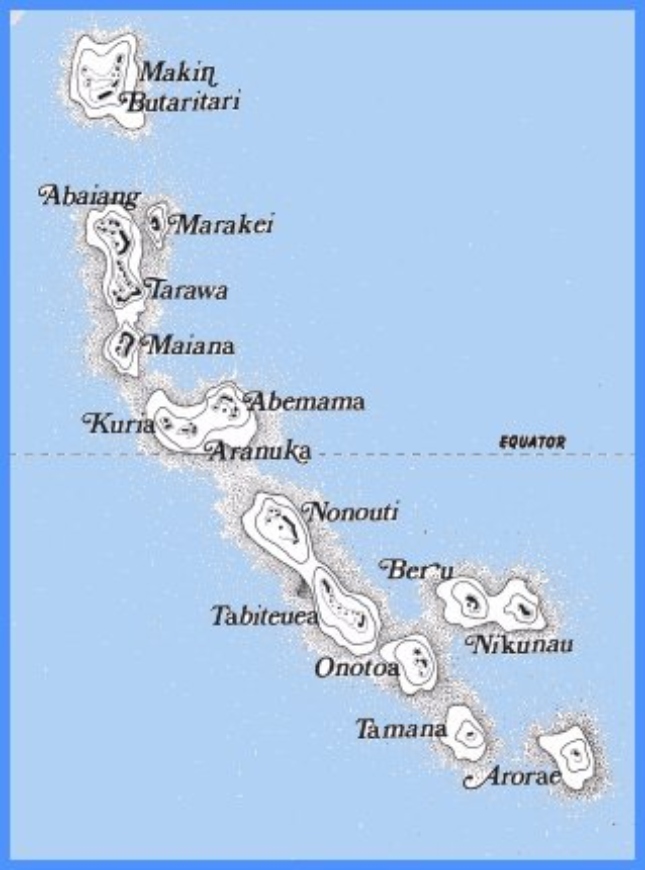Maiana - An Island In The Northern Kiribati Group
Maiana is an island in the Kiribati Group's northern region. There are 1,685 people reported to live there, and its area is 15.9 square kilometers. The residents of Tebanga on Maiana assert that the Maungatabu maneaba (public meeting house or site) originated in their hamlet, defying the prevalent tendency of Gilbertese folklore.
Author:Jane RestureFeb 12, 200415.7K Shares225.4K Views

Maiana is an island in the Kiribati Group's northern region. There are 1,685 people reported to live there, and its area is 15.9 square kilometers. The residents of Tebanga on Maiana assert that the Maungatabu maneaba (public meeting house or site) originated in their hamlet, defying the prevalent tendency of Gilbertese folklore.
This could be the case because it is believed in the southern Gilberts that a chief from the northern islands constructed the first Maungatabu-style maneaba.
The Traders
In general, and even amicably, the Gilbertese and the traders got along well in the late 19th century. However, as Swayne, the first Resident Commissioner, and visiting naval commanders soon learned, there were several events that resulted in complaints from one against the other.
The most frequent grievances voiced by traders were theft, damage to their property, and trade tabus. Anything that gave the islanders an advantage over the traders was quickly exploited. For instance, a very shy German businessman on Maiana was intimidated, had his property stolen, and was compelled to lower his rates.
Robert Corrie, a local trader on the same island for thirty-three years by 1892, was likewise forced to reduce his prices under fear of a trade boycott. Corrie noted that the islanders' demands for more compensation for their copra, in spite of volatility in the global market, were largely to blame for the issue.
Education
Published in 1965, it was the first post-war comprehensive description of the objectives and goals of colony education. A deal was made with the Catholic Mission to work with the government to create a nationwide education system.
The small mission-run village schools and island schools were to be combined into larger institutions offering a six-year primary curriculum taught by qualified instructors. Grants were to be provided by the government to help cover the cost of school supplies, teacher salaries, and the initial investment in new, permanent facilities.
The colony lacks the resources to carry out the consolidation scheme and the planned secondary education expansion. Furthermore, the majority of children's six-year education did not satisfy the public.
In Kiribati, secondary school is quite selective. About 3,000 kids take entrance exams every year to compete for 200 spots in secondary Government and mission schools. The government cannot afford to provide general secondary education for everyone, hence this selection is required. Furthermore, there is a lack of demand for labor and job openings, therefore mass education to this extent is not necessary.
Conclusion
The responsibility of providing for the youngsters who are not chosen for advanced training is on the government. The primary school curriculum was expanded to nine years in 1970, and as a trial project, community high schools were founded on four outer islands, including Maiana, to offer post-primary education to the majority of students. These schools, which take the place of primary school classes 7, 8, and 9, are practical and vocational in nature.

Jane Resture
Author
Since she embarked on her first world trip in 2002, Jane Resture spent the past decades sharing her personal journey and travel tips with people around the world. She has traveled to over 80 countries and territories, where she experienced other cultures, wildlife she had only read about in books, new foods, new people, and new amazing experiences.
Jane believes that travel is for everyone and it helps us learn about ourselves and the world around us. Her goal is to help more people from more backgrounds experience the joy of exploration because she trusts that travel opens the door to the greatest, most unforgettable experiences life can offer and this builds a kinder, more inclusive, more open-minded world.
Latest Articles
Popular Articles
